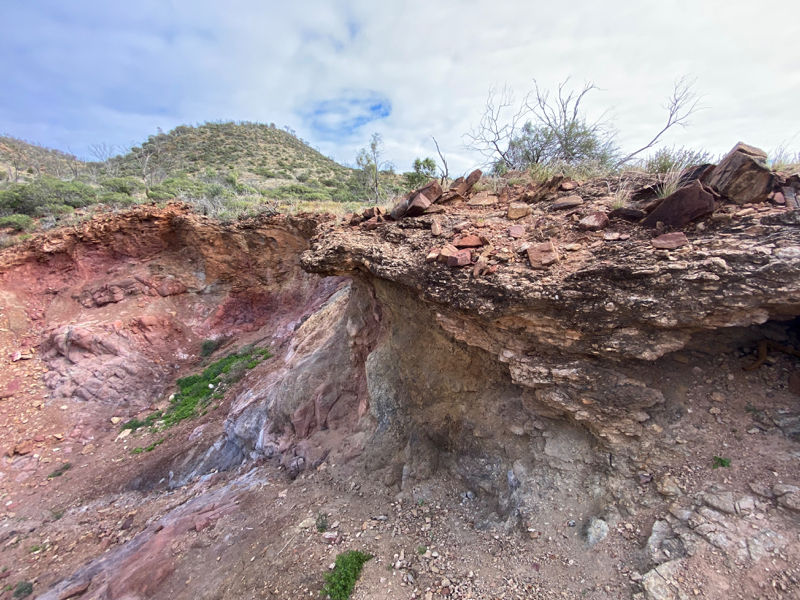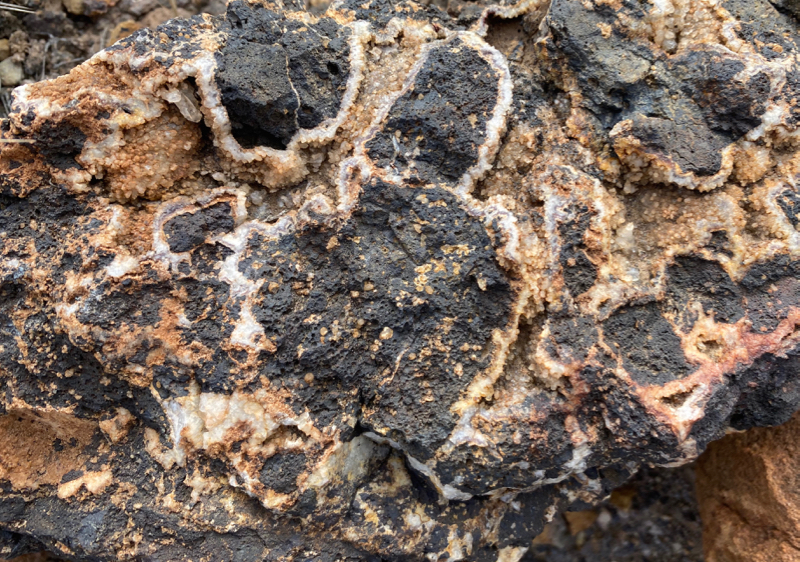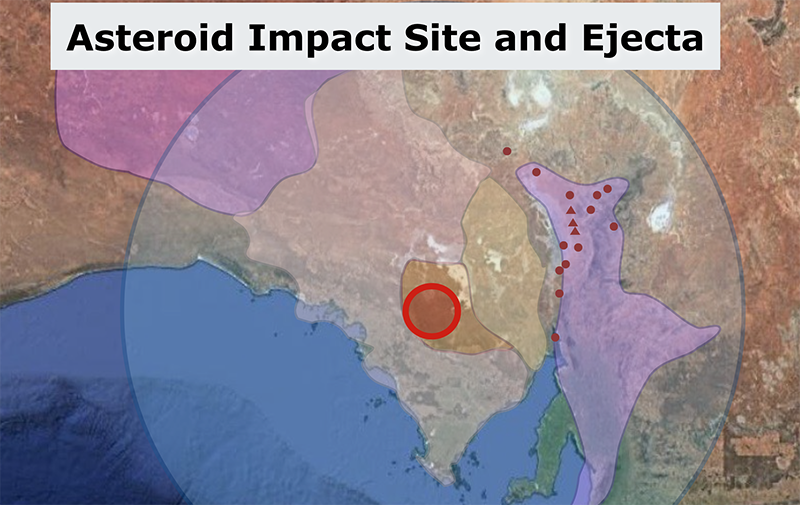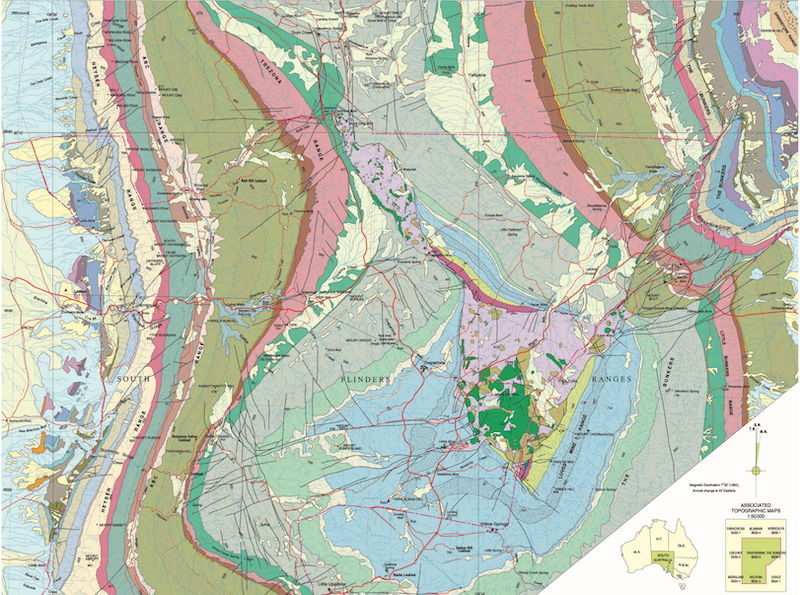Mt Neill Granite is exposed in a rocky creek near Paralana Hot Springs. The red feldspars of this 1580 million year old formation present in a variety of forms.



Mt Neill Granite is exposed in a rocky creek near Paralana Hot Springs. The red feldspars of this 1580 million year old formation present in a variety of forms.



This lightweight Kaolinitic Granite at NE Arkaroola is an alteration of Mt Neil Granite. Hydrothermal fluids have destroyed the micas and replaced the feldspars of the original granite (1580 million years old) with Kaolinite.

For more information on how to locate this site, see Geological Field Excursion Guides.
The Wooltana Volcanics formation (830 million years ago) is visible on exiting Claude Pass on the Paralana Road at Arkaroola.


For more information on how to locate this site, see Geological Field Excursion Guides.
Ripple marks, mud cracks and rain drop imprints indicate a shallow aquatic environment when the sediments of the Wortupa Quartzite formation were deposited around 790 million years ago.


For more information on how to locate this site, see Geological Field Excursion Guides.
Kaolinite is a white soft mineral created by hydrothermal alteration or weathering of formations such as this example of Skillogalee Dolomite at Arkaroola.


Professor Alan Collins from the University of Adelaide’s Earth Sciences Department in School of Physical Sciences is part of an international team who have reconstructed a one billion year history of the Earth’s tectonic plates.
Find out more about this amazing project in Cosmos Magazine’s article Tectonic Timelapse.
The Acraman Story is a fascinating interactive presentation outlining the discovery of the Acraman ejecta layer by geologist Dr Victor Gostin and his colleagues.
The Acraman layer is a narrow pebbly deposit of volcanic material set within the purple siltstone of the Flinders Ranges Bunyeroo Formation. While the oldest rocks of the Flinders Ranges were 900my, the Acraman samples were dated at 1600my. Early speculation pointed toward a volcanic bomb coming from the near west but this and other suggestions of deposition by glacial rafting, cliff debris or river movement were not viable.
After years of investigation, attention turned to the possibility of asteroid impact. A large asteroid impact scar (30-90km diameter) was found in the 1600my granite rich Gawler Ranges to the west of the Flinders Ranges – a perfect date match for the Acraman volcanic deposit.
The team pieced together an amazing story. The 4.8km wide Acraman asteroid hit the Gawler Ranges at around 22km per second around 680my, the age of the Bunyeroo silts. The asteroid itself was vaporised on impact and the impact into the ancient volcanic terrain displaced granitic rock (ejecta) layer which landed as far as the Flinders Ranges to the east.
Enter the The Acraman Story interactive.


Triassic plant fossils within concretions formed in the sedimentary layers of the Leigh Creek coal formation. The concretions appear to have been formed in concentric layers within the sediment, and within these are enclosed Triassic plant fossils, approximately 230 million years old.

A print resolution map of the Geology of the Flinders Ranges, including geological notes, drives and walking trails, can be downloaded here.




Mighty upright cross-bedded quartzite lining Frome Creek, northern Flinders Ranges.

